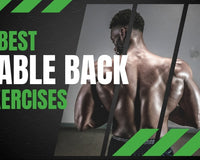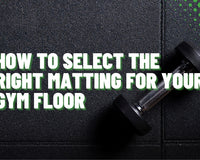Rowing machines are fantastic tools for building cardiovascular fitness and overall strength.
However, using them improperly can lead to bad habits or even injury. So we have listed 9 of the most common rowing machine mistakes we see to help you improve your form.
Rowing Machine Mistakes to Avoid
1. Using Only Your Arms to Row
A surprisingly common mistake is relying almost entirely on your arms to do all the work, ignoring the rest of your body.
As a result, the rowing motion becomes more of an arm exercise, and you miss out on the full-body benefits of rowing.
How to Fix it
Incorporate your legs and core into the motion. Think of the rowing motion as a synchronized dance where your legs push, your core tightens, and then your arms pull. Start the stroke with a strong leg push, followed by engaging the core and finishing with the arms.
Another possible cause of this mistake is poor flexibility. So, making sure to stretch daily can also help improve your rowing motion.

2. Rushing the Drive Phase
Rushing through the drive phase is another very common mistake you will see at gyms, especially during high intensity workouts.
If you move too quickly through the drive phase, you might lose control over your stroke. This rushing can result in less power and a reduced ability to engage the muscles properly.
How to Fix it
Focus on a controlled, powerful leg drive. A smooth and controlled drive phase will provide more power and efficiency in your stroke.
Even if you are trying to do a high intensity workout, you need to make sure you keep control of your reps to make sure you don't pick up an injury.
3. Bending Your Knees Too Early During Recovery
Bending your knees before your arms have fully extended interrupts the fluidity of the rowing motion and can create a choppy, less effective stroke.
If you find that you are banging your knees on the handle or you are having to lift the handle over your knees during the recovery phase of your stroke. Then, this is a likely cause.
How to Fix it
Extend your arms fully before you start bending your knees during the recovery phase. This keeps the motion fluid and prevents you from interfering with the stroke's natural flow.
 4. Holding the Handle Too Tightly
4. Holding the Handle Too Tightly
Gripping the handle too tightly can cause fatigue in the hands and wrists, and it might also make the rowing motion feel less natural.
If you find your forearms are burning at the end of a rowing session, it is likely that you are squeezing the handle too tightly.
How to Fix it
Hold the handle firmly but not tightly. A relaxed grip will allow for a more fluid stroke and reduce the risk of hand and wrist strain.
Being aware of this issue and consciously loosening your grip will help prevent fatigue in your forearms.
5. Pulling with Your Arms Too Soon
If you start pulling with your arms before your legs have fully engaged, you are not harnessing the full power of your lower body, making the rowing less efficient. This can have a significant impact on your rowing strokes, reducing the power you are generating.
How to Fix it
Initiate the rowing stroke with your legs, and once they are almost fully extended, use your back and arms. This sequence ensures a smooth, powerful stroke and minimises strain on the arms.
Related: How to Properly Maintain a Rowing Machine
6. Leaning Back Too Far at the End of a Rep
Overextending your back at the end of a stroke might feel like you're getting more range, but it can actually put strain on your lower back and disrupt the flow of the next stroke.
Leaning back too far can often be seen when people are trying hard to increase the length of each rowing stroke. While this might sound like a good idea to improve the performance numbers on your display, it can lead to back problems.
How to Fix it
Aim for a slight backward lean at the end of the stroke, not a full recline. This positioning maintains the flow of motion and prevents strain on the lower back.

7. Leading with the Seat During the Drive
If the seat is pushed out before the rest of your body engages, it causes a disconnection between your upper and lower body, leading to a weaker stroke and putting extra stress on your lower back.
How to Fix it
Synchronise the movement of your legs, back, and arms. Your body should move as one unit, with the legs initiating the drive and the back and arms following in a fluid motion.
8.Collapsing Your Chest Forward
Allowing your chest to collapse forward can lead to a rounded back, which puts unnecessary strain on your spine and detracts from the efficiency of your row.
Like we saw earlier with leaning back too far, collapsing your chest forward is often an attempt to overreach forward with the handlebar to increase the length of your rowing stroke.
How to Fix it
Maintain an upright posture with a slight forward lean at the start of the stroke and a slight backward lean at the end. Engaging your core muscles helps stabilise your posture and protects your back.
9. Bending Your Arms at the Start of the Row (Catch Phase)
If you start the stroke with your arms bent, you're missing out on the full range of motion and the power that comes from having your arms fully extended.
You will also find that your arms will fatigue quickly as they are under extra strain on each rep. So, if you find your arms get tired first, this might the root of the issue.
How to Fix it
Keep your arms straight as you initiate the catch phase of the stroke. This proper alignment enables a more powerful and efficient drive.
Wrapping Up
Rowing can be an excellent full-body workout when done correctly.
Understanding and avoiding these common mistakes will help you maximise your rowing machine sessions, reduce the risk of injury, and enhance your overall fitness.
Always consider consulting with a fitness professional if you are new to rowing or experiencing persistent difficulties with your technique.
Related: Best Home Rowing Machines





